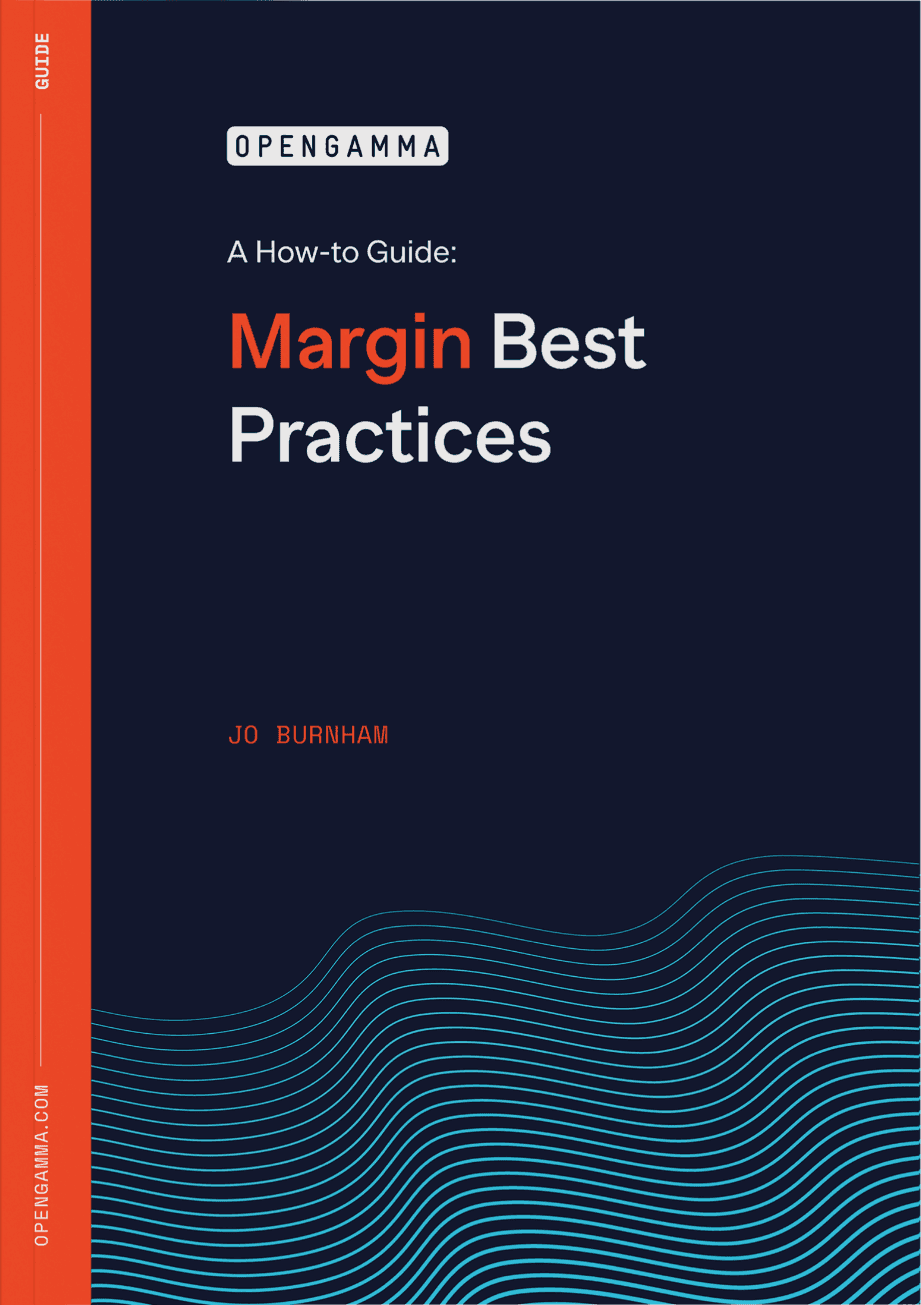Best Practices for Margin Management
Extreme volatility creates two major challenges for Treasurers. The first is price volatility itself, which makes it very difficult to predict variation margin requirements and therefore cash outflows. The second is the change in margin rates by clearing houses in response to price volatility, which results in higher initial margin requirements.
With so much capital at stake, it’s critical that firms start actively managing margin requirements.
Introduction to Margin Management
Firms are used to the fact that if they trade derivatives then they will have to pay margin. Each may have their own reasons for trading and the way in which they cover the margin requirements.
Energy firms, for example, use derivatives to hedge their physical positions. They are generally using working capital to fund the margin requirements on these derivatives positions. Hedge funds use derivatives for leverage and exposure, and will typically use the fund’s assets to cover margin requirements.
In normal times this wouldn’t create any issues, but recent market volatility has seen margin requirements spike, creating a threat to liquidity and forcing firms to post tens of millions in additional cash, depleting working capital otherwise deployed for revenue generating opportunities. Now, more than ever, active margin management of derivatives has become critical to the success of these firms.
As an example, the volatility resulting from the COVID-19 pandemic has required one large firm to increase their liquidity buffer by 50%. This increase was an order of magnitude greater than any normal variation margin calls and shows the opportunities available for reducing costs in volatile markets, based on a better understanding of margin and the ability to predict requirements ahead of time.
With this much capital at stake and with the ongoing volatility of the markets, there are a number of key questions that firms need to ask themselves. To answer those questions firms will need to put in place solutions which can perform the necessary calculations and provide the necessary analysis and data.
The 4 Pillars of Margin Management Strategy
Ensure You Are Called For the Right Amount of Margin
In this chapter we detail the importance for firms to be called for the right amount of margin. Which is done by validating the numbers that they are being told by the broker or Central Counterparty Clearing House (CCP). It’s important to validate the final margin and to understand why the margin could be wrong. We will look into the five areas that can be validated, the types of issues that can occur and probably most importantly the impact of margin discrepancies.
The five areas are:
. Positions
There are three issues that need to be dealt with to help validate positions. Additionally, a mismatch between trades and positions can lead to margin discrepancies.
. Fees and Commissions
Detailing the four factors that drive fees and commissions, and how discrepancies with both can negatively impact your margin.
. Variation Margin and OTE
How prices and contract sizes can help validate variation margin and OTE, and how discrepancies with both can harm margin.
. Initial Margin
How parameters provided by the CCP help calculate initial margin, and the importance of no errors with calculation. Furthermore, what the impact will be if there is a discrepancy when a margin multiplier is applied.
. Collateral
Margin calls are dependent on the collateral lodged, either with a broker or direct with a CCP. When it comes to collateral there are three factors that need to be validated. Any discrepancies with collateral will impact your margin calls.
Understand the Drivers of Margin Change
If everything mentioned in the first chapter is validated, but there are large changes in daily margin. Then it is important to see where these changes are coming from, hence the importance of understanding the drivers of margin.
There are three areas that can impact margin requirements:
. Change in Position
There are two cases that need to be considered. Changing the overall risk level of the portfolio, and adjusting the position but keeping the risk level the same.
. Change in Prices
Not only can price changes affect futures variation margin requirements, but it can also affect futures initial margin requirements as well.
. Change in Parameters
CCPs are setting parameters and determining the appropriate values by using some form of a Value at Risk (VaR) model, such as a filtered historical simulation or a historical simulation.
Minimise the Margin You Post
To be able to increase return on capital it is necessary to reduce margin requirements without changing trading. There are a number of ways in which it is possible to optimise margin requirements, without changing the risk of a portfolio.
. Choice of CCP
Here we focus on how choosing the right CCP can have an impact on your margin requirements. How collateral costs can impact margin costs. Plus, how calculating what-if margins and comparing their margin costs can maximise your returns.
. Choice of Broker
Detailing the importance of choosing the right broker, which can reduce margin requirements. Also, the impact of splitting positions with brokers, which can be used to minimise the liquidity risk component of the margin that is calculated.
Maintain Optimal Cash Buffers
Getting the amount of cash buffer required correct is key to successful margin management. Getting it too low or too high will provide issues either way. Firms need to be able to forecast liquidity requirements to optimise their use of derivatives and ensure they are not forced to close out positions in times of stress. Both variation and initial margin can impact the margin call, and firms need to be able to predict how they might be impacted by any changes, be that in market prices, margin parameters, or their own positions. Within the fourth chapter, we detail the four techniques that can be used to do this:
. Intraday Margin Calculation
This is where you change levels of requirements during the day as an estimate of the margin call for the next day.
. Margin at Risk
Using VaR methodology to predict likely margin calls under normal circumstances.
. Backtesting
Backtesting helps make sure you get your liquidity requirements right.
. Stress Testing
Stress test margin requirements are used to prepare for extreme volatility. Extreme volatility leads to initial margin requirements and variation margin requirements being affected.
Download Our Ebook For Margin Management Best Practices
This blog is just a small glimpse into our Ebook. Download our Ebook where we look in more detail at the problems that market volatility is creating around margin. We will provide pointers and examples as they will assist with your margin management strategy. And finally, we will look at the potential solutions that can be used, and the advantages and disadvantages of each.




